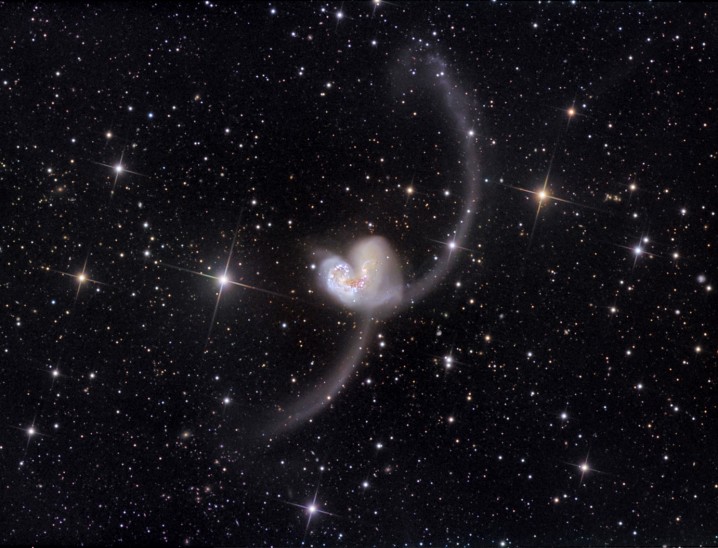 |
Астронет: Астрономическая картинка дня Антенны http://variable-stars.ru/db/msg/1214697/eng |
Credit & Copyright: Daniel Verschatse
(Antilhue Observatory)
Explanation:
Some 60 million light-years away in the southerly
constellation
Corvus, two large galaxies
have collided.
But stars in the two galaxies -
NGC 4038
and NGC 4039 - don't collide
in the course of the ponderous, billion year or so
long
event.
Instead, their large clouds of
molecular
gas and dust do, triggering furious
episodes of star formation.
Spanning about 500 thousand light-years,
this
stunning view
reveals new star clusters and
matter flung far from the scene
of the accident by gravitational tidal forces.
Of course,
the visual appearance of the far-flung arcing structures
gives the galaxy pair their popular name - The
Antennae.
Recorded in this deep image of the region at the tip of the upper arc
is a tidal dwarf
galaxy NGC 4028S, formed in the cosmic debris.
Authors & editors:
Robert Nemiroff
(MTU) &
Jerry Bonnell
(USRA)
NASA Web Site Statements, Warnings,
and Disclaimers
NASA Official: Jay Norris.
Specific
rights apply.
A service of:
LHEA at
NASA /
GSFC
& Michigan Tech. U.
